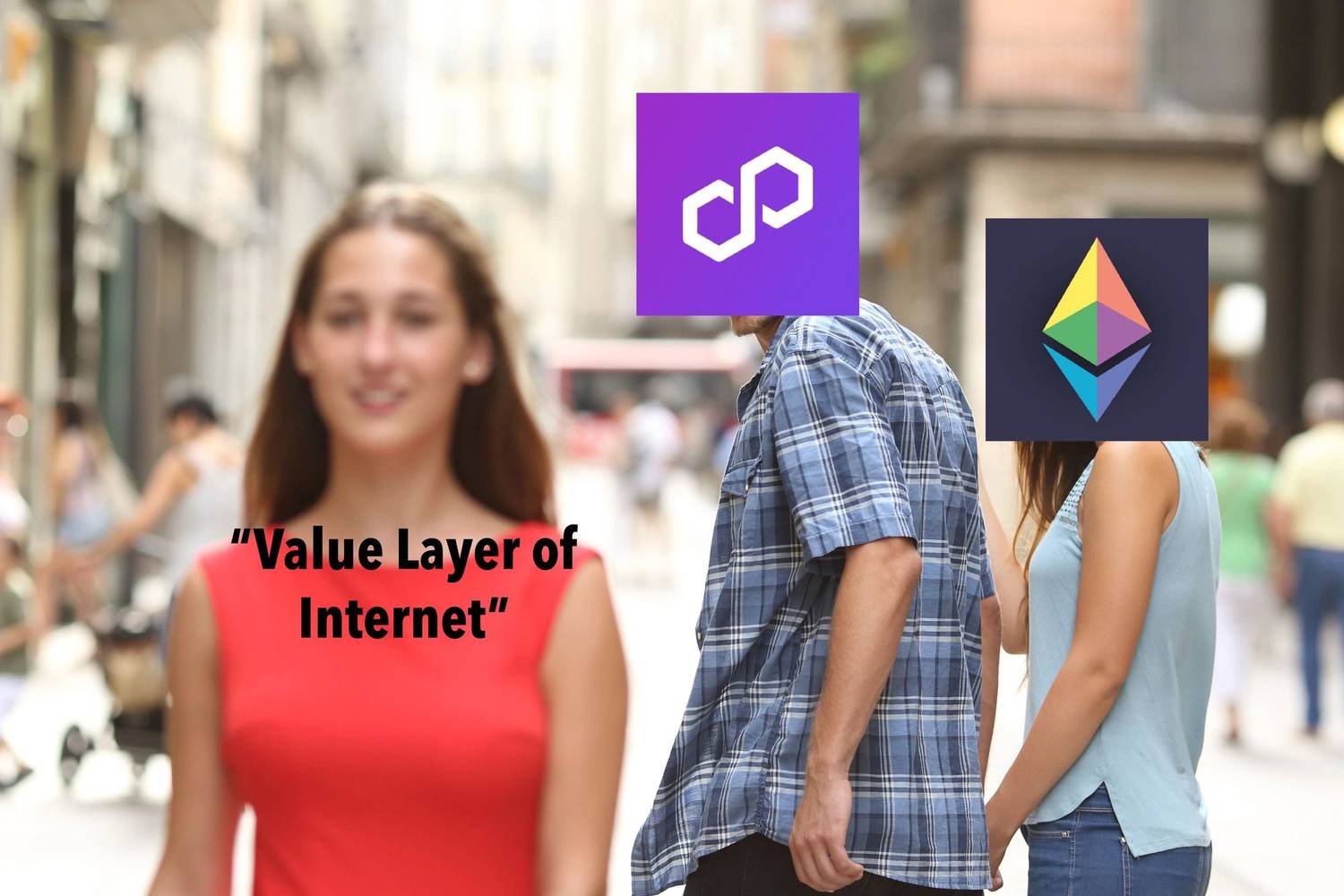Polygon 2.0 - The "Value Layer" That Settles on Ethereum?
Polygon 2.0 claims to be the 'Value Layer of the Internet.' However, given every blockchain carries inherent value, isn't this just a rebranding tactic? Notably, Polygon's layer 2 value rests on Ethereum.
Polygon has announced its plan to reinvent itself as the "Value Layer of the Internet," signaling an ambitious upgrade strategy dubbed Polygon 2.0. This move positions Polygon as a protocol to democratize access to the global economy through decentralization. It promises unlimited scalability, unified liquidity, and a single-chain user experience, all powered by ZK technology. But let's step back and consider: Isn't every blockchain a "value layer" in its own right? And isn't Polygon, by its very nature, an adjunct to Ethereum rather than a separate value layer?
Fundamentally, any blockchain is designed to allow the creation, exchange, and programming of value in a trustless, transparent, and secure manner. Whether it's Bitcoin's peer-to-peer digital cash system or Ethereum's smart contract platform, each provides a mechanism for creating, storing, and transmitting value. So, the concept of a "value layer" isn't unique to Polygon 2.0, it's at the heart of blockchain technology.
While the marketing for Polygon 2.0 paints a compelling vision of democratized access to the global economy, its proposed upgrades are much less a novel reinvention than they are an evolution of existing layer two solutions. These upgrades, aimed at tackling scalability and liquidity fragmentation, are not unprecedented. They follow the same roadmap of layer two solutions that have been explored and implemented across the blockchain sector.
Indeed, Polygon's ambitious goal to support an unlimited number of chains while maintaining the user experience of a single chain is admirable, but it's important to remember that this relies on the existing Ethereum infrastructure. In effect, Polygon 2.0 plans to build on Ethereum’s capabilities, not replace them.
The essence of Polygon’s function, after all, is as a layer two scaling solution for Ethereum. It processes transactions on a separate chain and then integrates these transactions back onto the Ethereum mainnet. Polygon’s entire mechanism, from the concept of staking its native MATIC token to its ZK rollups, plasma sidechains, and PoS blockchain bridge, all ultimately lay on the foundation of Ethereum's robust smart contract platform. So where is the layer with value?
Polygon's role as a layer two solution is not just a technical consideration but a strategic positioning that benefits from the trust, security, and the vast ecosystem Ethereum has built over the years. Thus, any representation of Polygon 2.0 as an independent value layer may appear misleading, given that the platform's value is intertwined with Ethereum's performance and trustworthiness.
It's essential to consider the larger context: even as Polygon seeks to reinvent itself, Ethereum is not standing still. The Ethereum community is actively working on Ethereum 2.0, a comprehensive upgrade that aims to tackle the very scalability issues that have catalyzed the development of layer two solutions like Polygon. The dynamics between Ethereum 2.0 and Polygon 2.0 will be a significant factor in determining the real value proposition of Polygon's latest upgrade.
Equally important is the rise of competing networks like Solana, which offer high throughput, low fees, and fast transaction times. Solana significantly surpasses Ethereum and Polygon's current transaction capacity, even when they move to 2.0. It presents a robust base layer solution that may diminish the perceived need for a layer two solution like Polygon.
Solana’s architecture allows for a single, global state shared among all nodes in the network. This design allows for the creation of composable programs that can interact with each other in the same way as Ethereum, but with the high performance of a centralized system. This raises the question of how a layer two solution like Polygon 2.0 fits in an increasingly competitive landscape with high-performance base layers.
In summary, while Polygon 2.0's ambitious plans may mark an evolutionary step in layer two solutions, they don't necessarily set it apart as a unique "value layer of the Internet". Instead, Polygon 2.0 seems to be embarking on a journey towards becoming a more efficient, more user-friendly, and more scalable layer two solution, with its value still firmly rooted in the Ethereum ecosystem. As the blockchain sector continues to evolve, we should not be swept away by marketing narratives but focus on the underlying technological merits and broader ecosystem dynamics. After all, in the world of blockchain, every layer has value.


